If you follow me on Instagram, you saw that I was at the Whitney museum this weekend to see the Edward Hopper exhibit. It ends soon, so I’m glad I was able to see it. I had seen Nighthawks at the Chicago Museum of Art, but it was only after I read Lawrence Block’s wonderful anthology, In Sunlight or in Shadow, where everyone from Stephen King to Joyce Carol Oates (and LB himself) wrote stories inspired by a Hopper painting, that I began to appreciate the artist.
The nod to “Danny Boy” is an apt one, because sunlight and shadow are two of Hopper’s favorite subjects, as are solitary women and windows. He’s well admired by those who love film noir, and the city of New York inspired his palette, so pairing him with crime writers like Lee Child and Megan Abbott was a natural choice. LB won the Edgar that year for his story set at the Automat.
I thought the two patrons looking in the window were perfect. We’re looking in at a woman wrapped in a pink bath towel, so they are stand-ins for the painter and his audience. New York and its apartment windows made voyeurs of many new arrivals; the telescope aimed not at the stars, but at the neighbors, became a cliche and of course inspired Rear Window. But this is less common a subject for him than to portray a woman inside the room looking out.
Hopper loved to paint women, often naked, looking out windows without showing us what they saw. It could be nothing at all, or simply a naked woman standing in a sunrise like a city-born Aphrodite basking in the gaze of Helios, lapping up warmth like a cat on a cold day; but it can also stand in for looking at the uncertain (or dreadfully certain) future, and seeing them deep in thought offers a glimpse into their souls. After the ‘20s, these were always his wife, Jo; a watercolorist in her own right. She looks less vulnerable than liberated in the nude poses; unfettered, perhaps. The point of view removes the sense of voyeurism. This NPR article gives a little detail on the above painting, and her modeling.
Contrast this with Gregory Crewdson, whose misty, dream-soft photographs often seem similar to Hopper in composition. If you haven’t read Joyce Carol Oates’s introduction to Crewdson, you can do so below, with many of his photographs:
Some Crewdson photographs, like “The Basement,” match Hopper’s approach to light; others go for a soft filmy approach that requires a lot of moisture in the air, but evokes something else entirely, than Hopper’s impressionistic faces smudged in shadow, or poses that twist their visage away, turning them into another tree in the forest of the city.
There’s a lot to explore with Hopper, but some of his appeal for me is seeming him depict people alone. With phones, many of us are never really alone anymore, and reimagining his work in today’s world adds a new layer of interest. Take for example “The Automat,” which LB looked at and imagined a story with a delightful twist:
She’s staring into her coffee, wearing one glove and a fur-lined coat, sitting near the radiator. Cold and alone, ducking into a place where you can get a slice of pie without enduring human contact. Is she lonely, or enjoying this solitude? Is it a welcome respite, or just another day of no connections in a city of eight million souls?
Now imagine her today, thumbing her phone instead. Hopper would perfectly capture her face lit from below by the digital screen; her eyes would remain smudges. Would her expression he the same, her face wan? If so, we’d know she was texting someone she might not want to see. Read LB’s story and see what you think of his imagination. If you’d rather listen to the story, it was recorded for the Word Crimes podcast:
But after thinking to myself how different these scenes would be today—if Hopper were wandering around Manhattan like Cartier-Bresson with his camera, looking for inspiration—all I could think of was how we seem to have lost a lot of our chances for solitude and reflection, as we stare into the candy-colored abyss of our phones. This painting is full of possibility:
Has she been stood up by her date, or is she avoiding him? Is she merely seeking a moment’s peace, or wondering if this is her chance to walk away from the man occupying the seat next to hers? Today, she’d be on her phone. That might introduce more possibilities, but the shadow across her cheek might not have the same portent.
Sherry Turkle, who has followed “life on the screen” for decades, writes about the contradictions of digital life in her books Reclaiming Conversation and Alone Together. Our phones, laptops, and computers allow us to contact people all over the planet day or night, but we are never really alone with people anymore, when the phone is in their pocket. Out of sight, but hardly ever out of mind. And we are also hardly ever alone with ourselves. Maybe doom-scrolling is better company?
Maybe we’ve always been strangers on a train, with private little windows and our chairs turned askew. There’s a famous meme of train riders all engrossed in newspapers, as if that is the same; but newspapers don’t interrupt a conversation. And people talk about what they read in them. I just had lunch with Lawrence Block—we discovered Loatian food together just before the pandemic, and reunited at the same glorious little Tribeca hole-in-the-wall—and we talked about that day’s Times article on how the “return to the office” may never occur. And while I have a moment to enjoin you on that subject, good riddance to the office.
I held two jobs for nearly ten years each prior to the pandemic; I speak to exactly zero of my coworkers from those positions. I’ve had two since the pandemic as well, and made a friendship over Zoom and chat, that blossomed when we finally met at a brief work event. Not having to sit next to him in a cubicle, with zero escape, made me eager to meet him. Contrast that with the coworker who I sat next to for five years, chatted about restaurants, John Waters films, and so on, who always said we should go grab dinner with, and never did. Now, I’m not saying work friendships don’t happen, but that level of familiarity also breeds contempt. You’re trapped on that train in the Hopper painting above, and have to listen to their lives all day.
I mean, don’t you think the woman in the above painting wishes she worked from home? How I love their pallid faces and raccoon eyes, like they are distant cousins in the Addams family, bureaucratic vampires in an office devoid of sunlight. What’s left his barely parted lips to make her pause at the filing cabinet, looking so exhausted?
I think remote work will be a boon to office life. If you want to socialize, you will. And you won’t be pressured into drinks after clock-out, when all you want is to go home. Turkle argues that Zoom robs conversation of nonverbal cues and body language that’s off camera, and she is correct; it’s not a substitute for an hour at a table in a nearly empty restaurant, chatting over sweet chili coconut rice balls with wafer-thin coins of lemongrass chicken sausage; or a few hours of tramping the Kansas City streets with a beer in hand, visiting local watering holes. But it can lead to both. I connected first to LB through email and Twitter; and as said, my coworker and I first chatted on Teams calls between meetings.
Maybe today, Hopper would capture wan faces lit by monitor light, as a woman stares at her laptop screen before a Zoom call; or as she thumbs her phone screen while she rests her legs and leans on balcony at a theater. In the painting below, it’s the pose of the woman that pops it to life for me; the theater lighting is rich and moody, but her calf and the tight fold of her dress snap me out of its impressionist glow and into photographic reality.
That’s odd for a Hopper painting, for me. Usually I squint a little to soften the image and let him keep me in the dream a while, as Crewdson does with his elaborately directed photographs in their misty mid-world.
I meant to post a trip report from the Hudson Valley at the edge of the Catskills, but I’ll try to get that done before Thanksgiving next week. I have a few more videos to edit. Other upcoming posts include the Hudson River Walkway Bridge in Autumn, the Chroma exhibit at the Metropolitan Museum of Art, and a visit to the site of the Hindenburg Disaster.
Once again, feel free (meaning: please, please do this) share this post with friends who you think might dig what I do, either by forwarding the email to them, or sharing on your favorite social media platforms by using the button above.



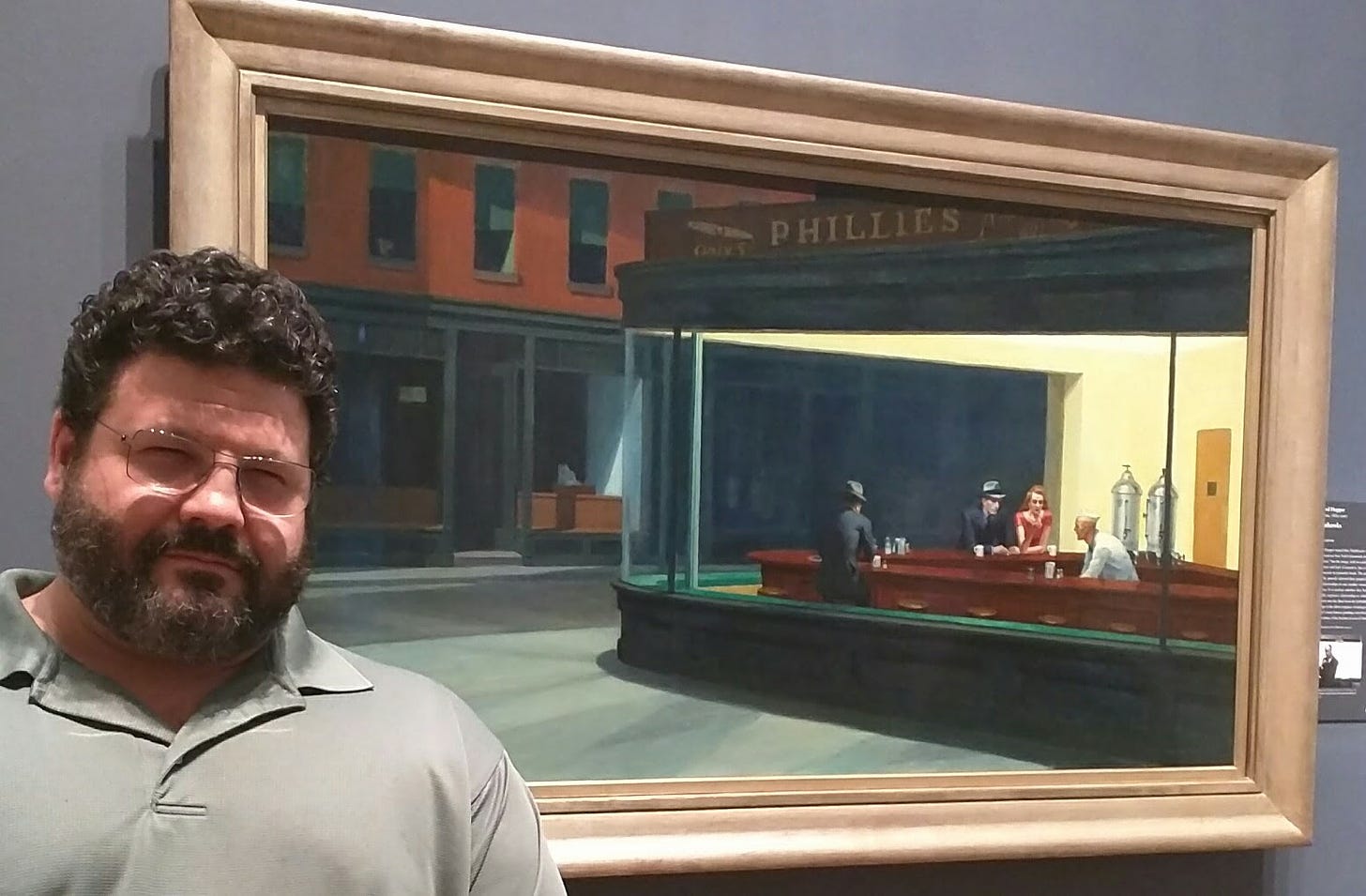
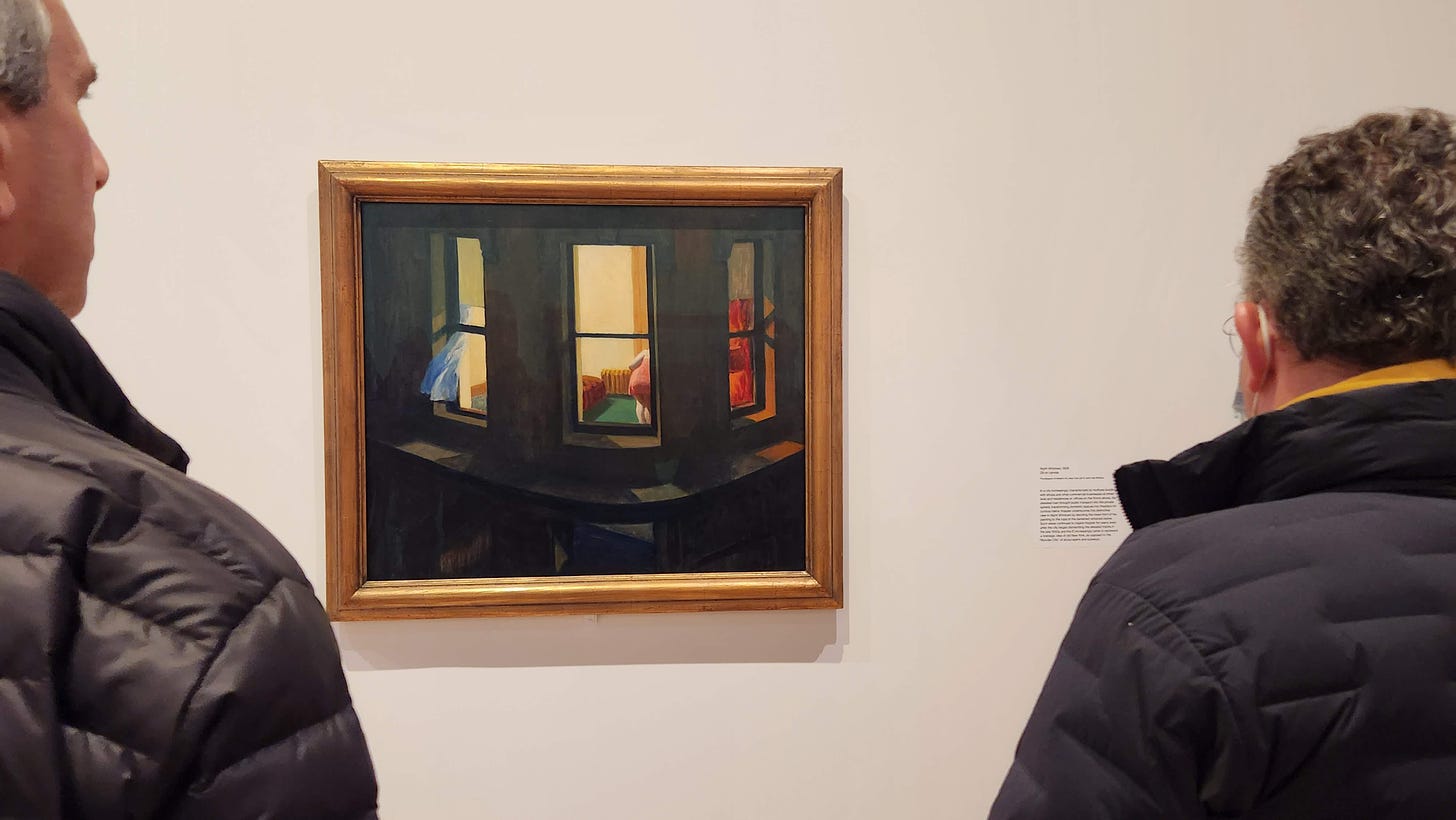
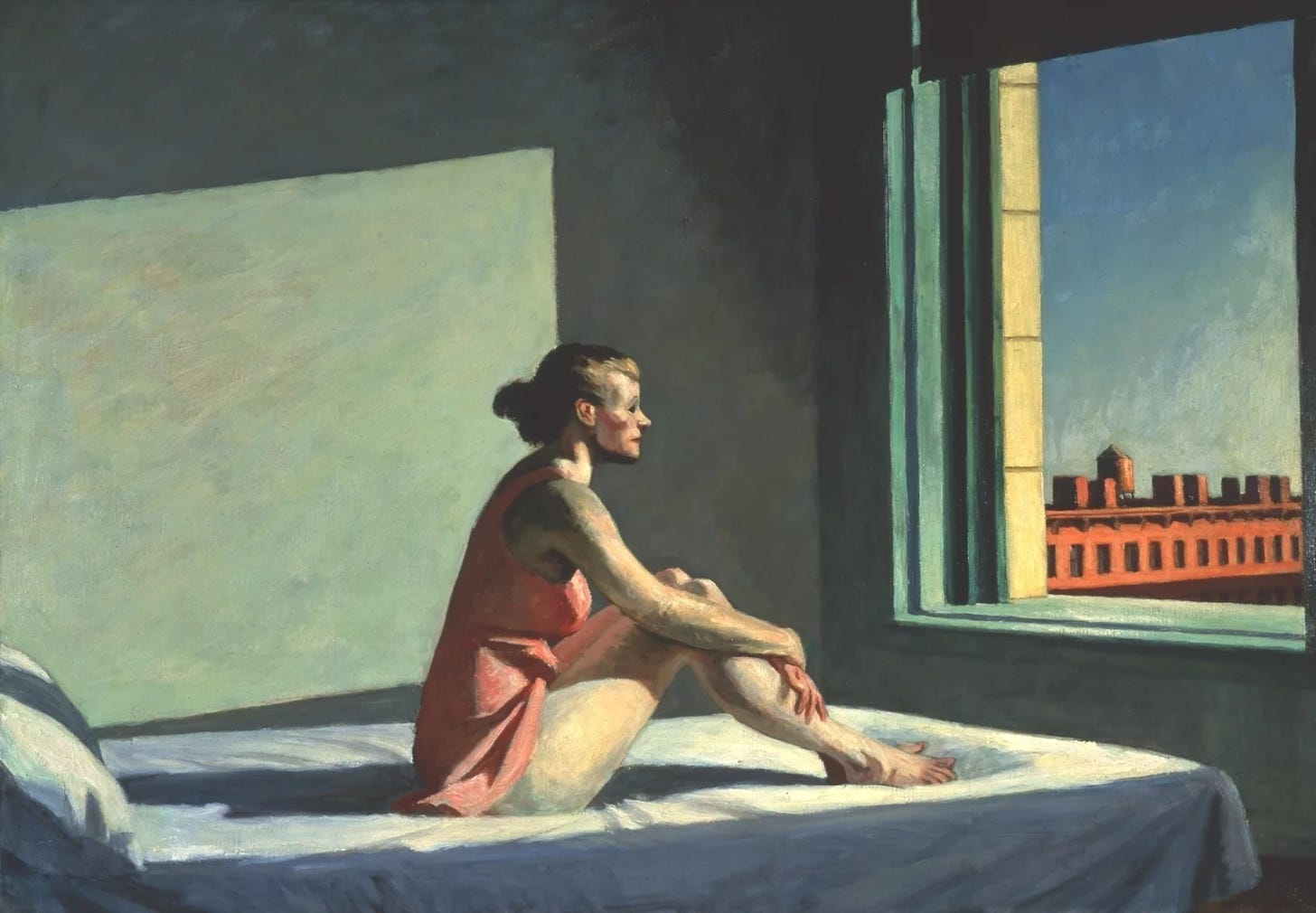

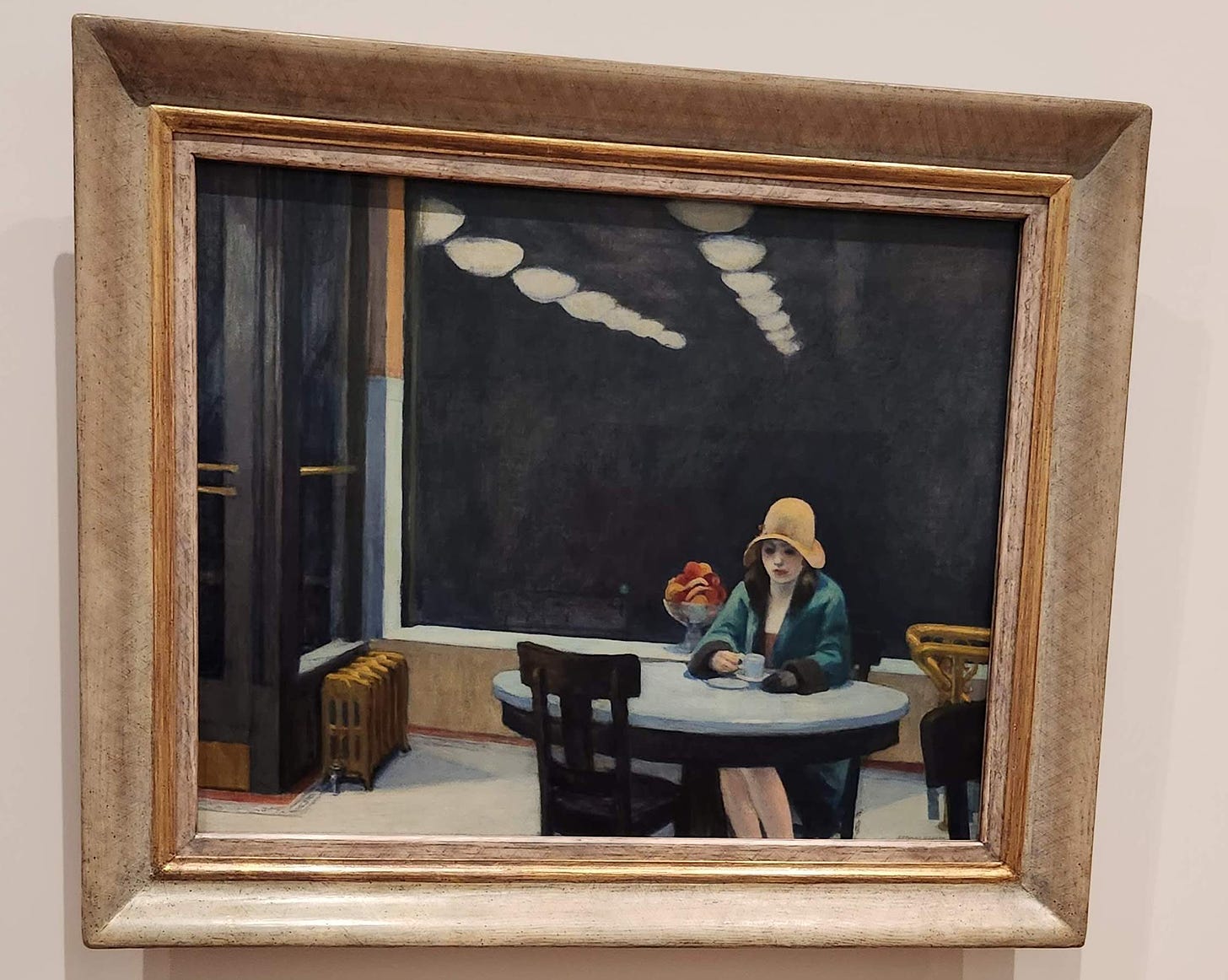
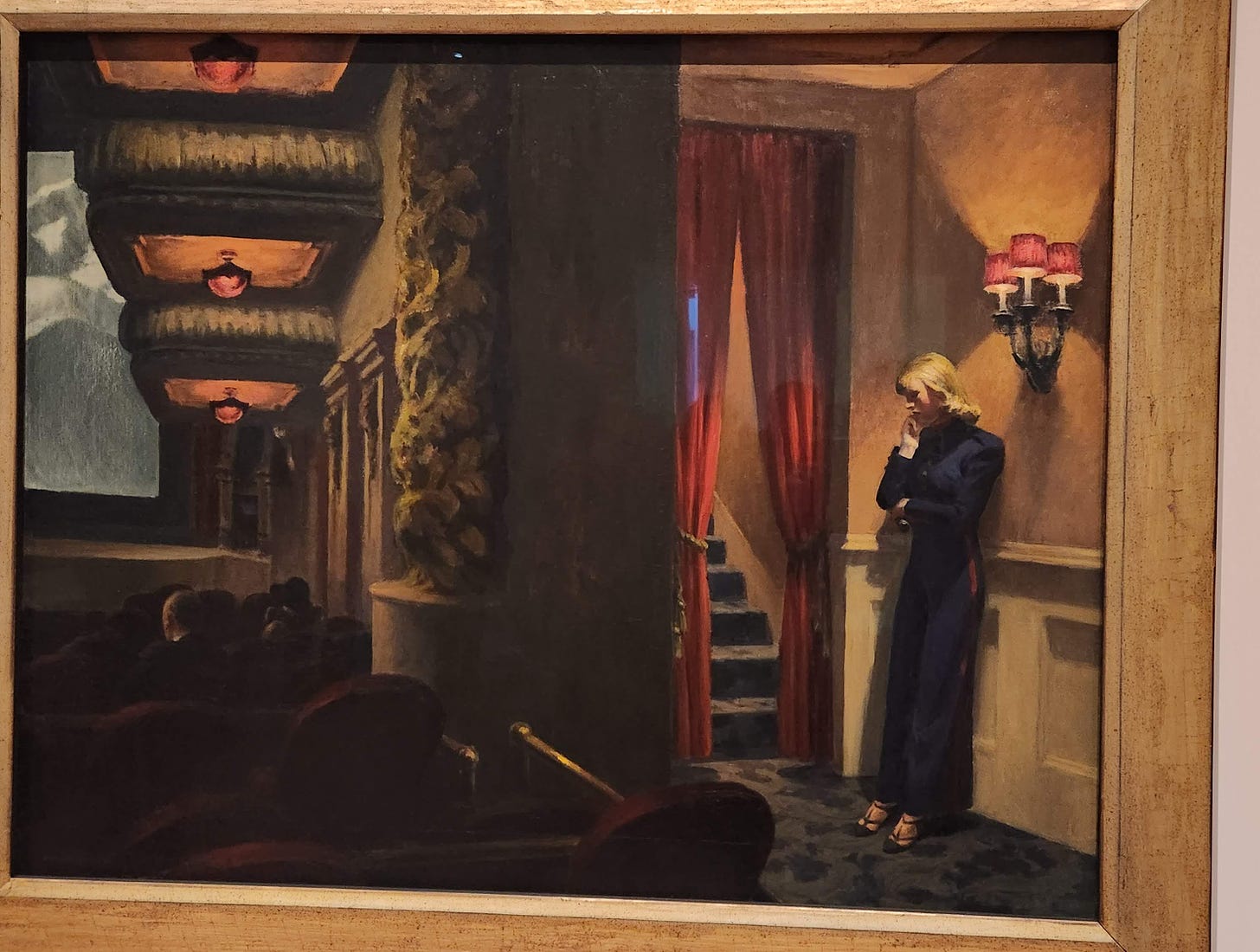

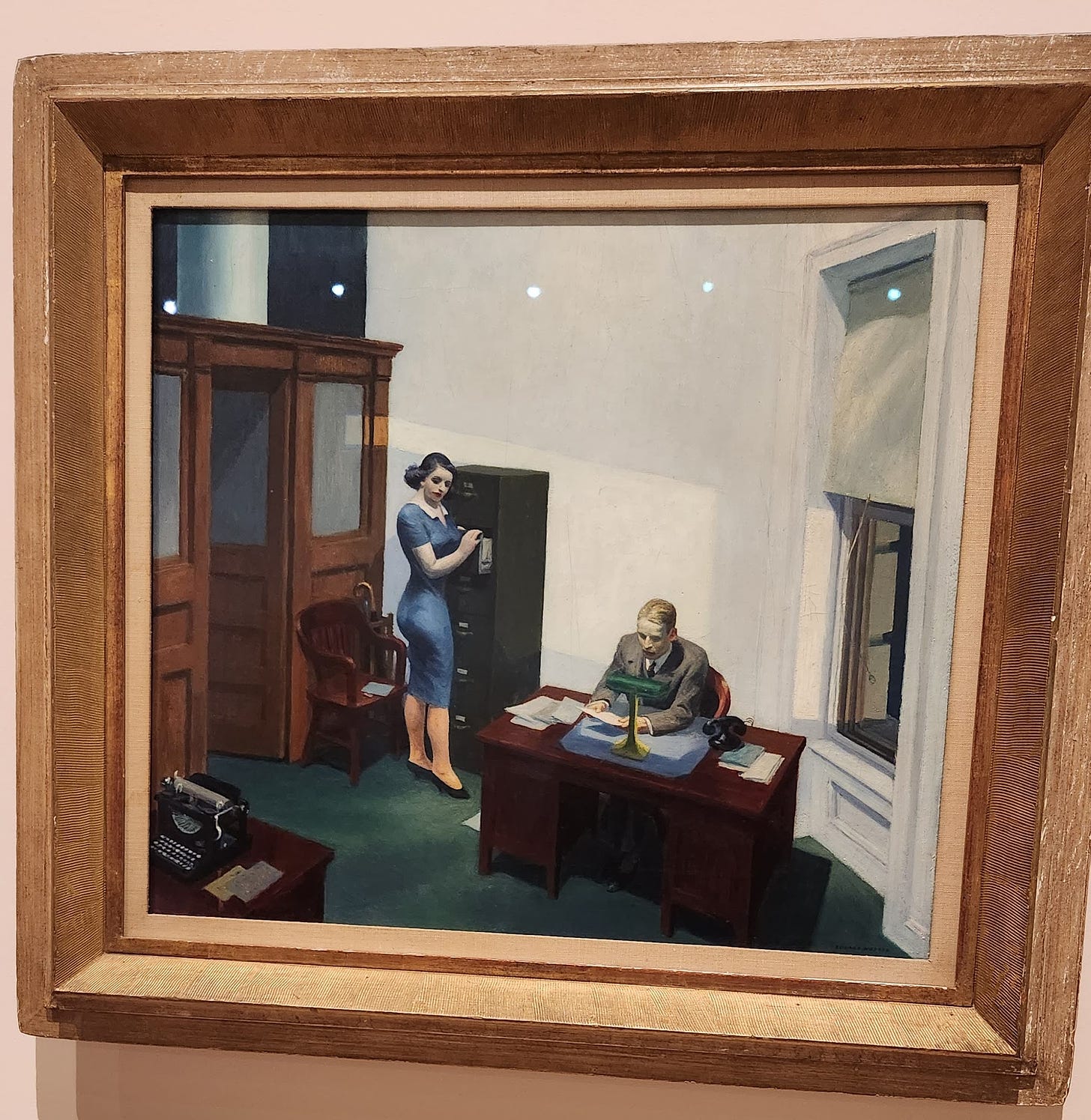
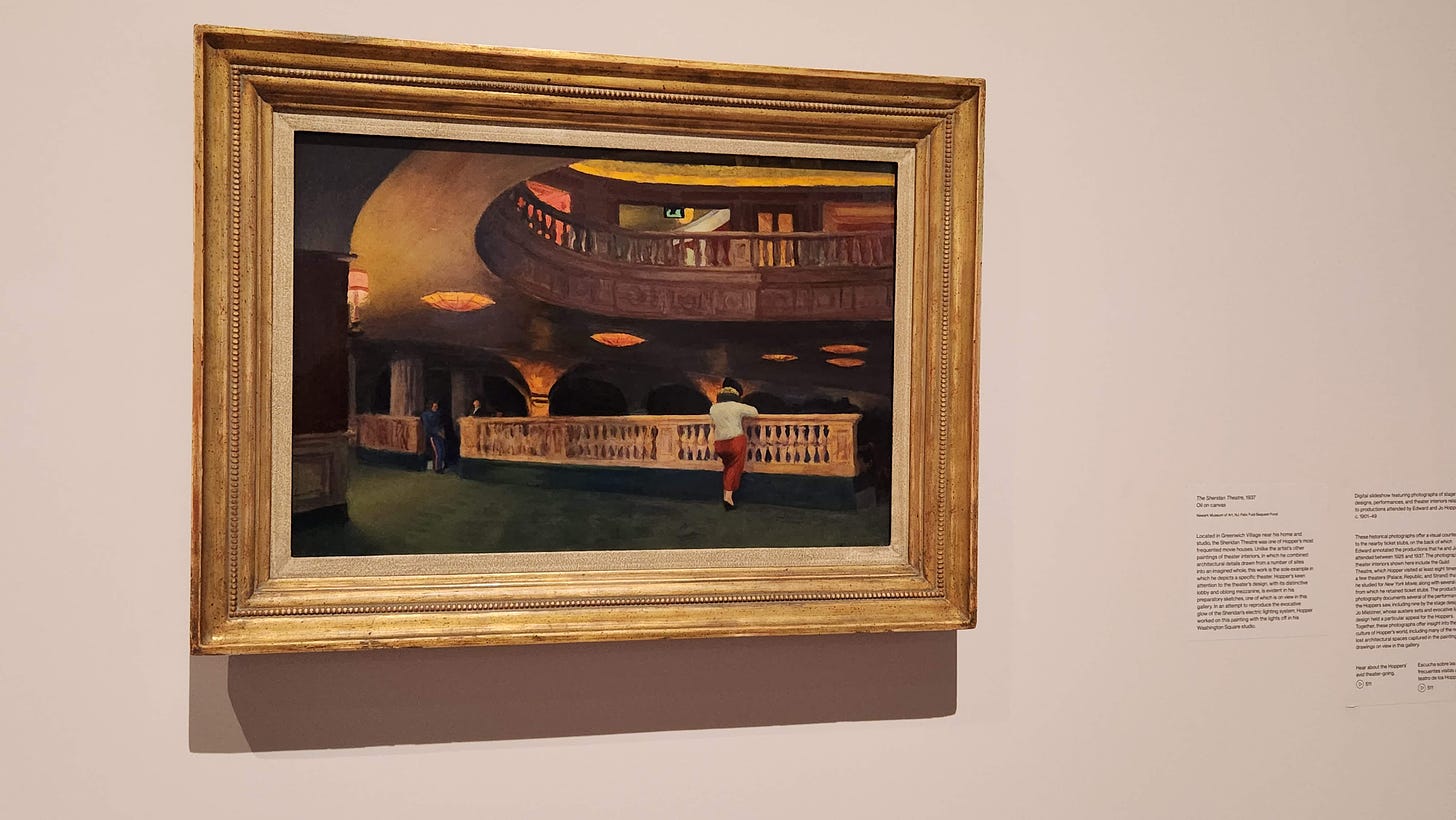
I gave my mom a cooking class at the CIA for her birthday a while back and while we were in the area we visited the Walkway Bridge. It was gorgeous. Look forward to the post!